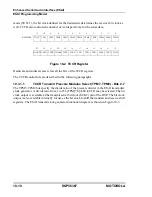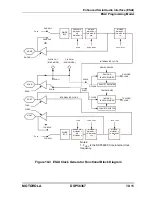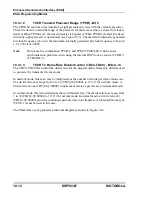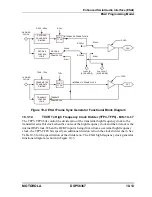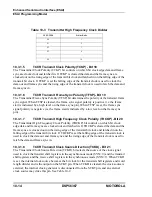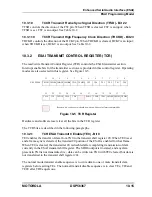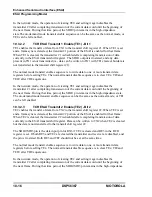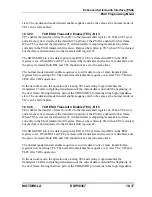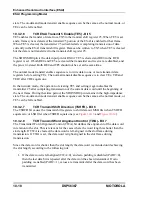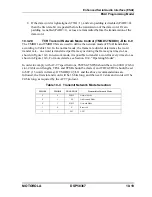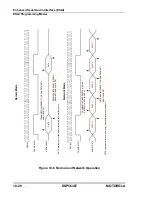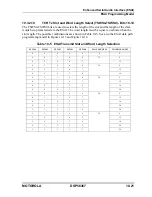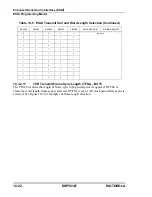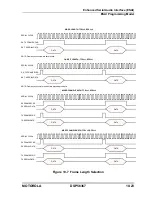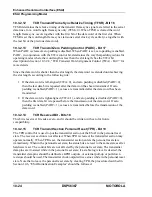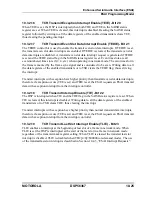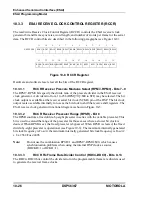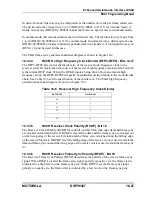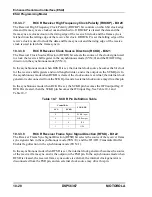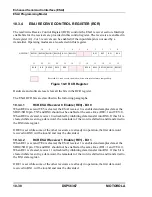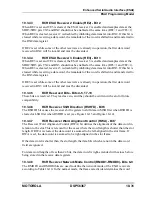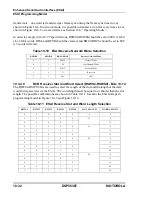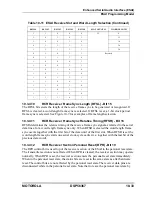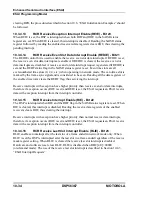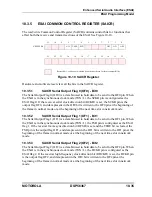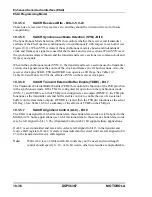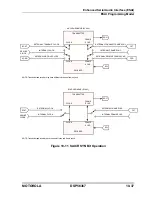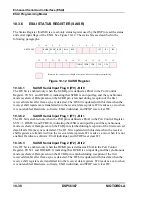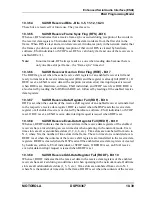
10-24
DSP56367
MOTOROLA
Enhanced Serial Audio Interface (ESAI)
ESAI Programming Model
10.3.2.12
TCR Transmit Frame Sync Relative Timing (TFSR) - Bit 16
TFSR determines the relative timing of the transmit frame sync signal as referred to the serial
data lines, for a word length frame sync only (TFSL=0). When TFSR is cleared the word
length frame sync occurs together with the first bit of the data word of the first slot. When
TFSR is set the word length frame sync starts one serial clock cycle earlier (i.e together with
the last bit of the previous data word).
10.3.2.13
TCR Transmit Zero Padding Control (PADC) - Bit 17
When PADC is cleared, zero padding is disabled. When PADC is set, zero padding is enabled.
PADC, in conjunction with the TWA control bit, determines the way that padding is done for
operating modes where the word length is less than the slot length. See the TWA bit
description in Section 10.3.2.8, “TCR Transmit Word Alignment Control (TWA) - Bit 7” for
more details.
Since the data word is shorter than the slot length, the data word is extended until achieving
the slot length, according to the following rule:
1. If the data word is left-aligned (TWA=0), and zero padding is disabled (PADC=0),
then the last data bit is repeated after the data word has been transmitted. If zero
padding is enabled (PADC=1), zeroes are transmitted after the data word has been
transmitted.
2. If the data word is right-aligned (TWA=1), and zero padding is disabled (PADC=0),
then the first data bit is repeated before the transmission of the data word. If zero
padding is enabled (PADC=1), zeroes are transmitted before the transmission of the
data word.
10.3.2.14
TCR Reserved Bit - Bits 18
This bit is reserved. It reads as zero, and it should be written with zero for future
compatibility.
10.3.2.15
TCR Transmit Section Personal Reset (TPR) - Bit 19
The TPR control bit is used to put the transmitter section of the ESAI in the personal reset
state. The receiver section is not affected. When TPR is cleared, the transmitter section may
operate normally. When TPR is set, the transmitter section enters the personal reset state
immediately. When in the personal reset state, the status bits are reset to the same state as after
hardware reset. The control bits are not affected by the personal reset state. The transmitter
data pins are tri-stated while in the personal reset state; if a stable logic level is desired, the
transmitter data pins should be defined as GPIO outputs, or external pull-up or pull-down
resistors should be used. The transmitter clock outputs drive zeroes while in the personal reset
state. Note that to leave the personal reset state by clearing TPR, the procedure described in
Section 10.6, “ESAI Initialization Examples” should be followed.
Summary of Contents for DSP56367
Page 16: ...xvi MOTOROLA CONTENTS Paragraph Number Title Page Number ...
Page 22: ...xxii MOTOROLA List of Figures Figure Number Title Page Number ...
Page 26: ...xxvi MOTOROLA List of Tables Table Number Title Page Number ...
Page 148: ...4 6 DSP56367 MOTOROLA Design Considerations PLL Performance Issues ...
Page 248: ...9 30 DSP56367 MOTOROLA Serial Host Interface SHI Programming Considerations ...
Page 306: ...10 58 DSP56367 MOTOROLA Enhanced Serial Audio Interface ESAI ESAI Initialization Examples ...
Page 389: ...Bootstrap ROM Contents MOTOROLA DSP56367 A 15 end ...
Page 390: ...A 16 DSP56367 MOTOROLA Bootstrap ROM Contents ...
Page 432: ...C 8 DSP56367 MOTOROLA JTAG BSDL ...
Page 484: ...D 52 DSP56367 MOTOROLA Programmer s Reference ...
Page 490: ...E 6 DSP56367 MOTOROLA Power Consumption Benchmark ...
Page 516: ...F 26 DSP56367 MOTOROLA IBIS Model ...
Page 522: ...Index 6 MOTOROLA Index ...
Page 523: ......

